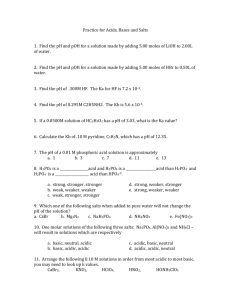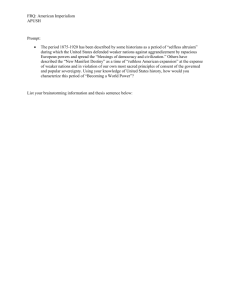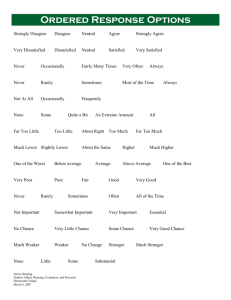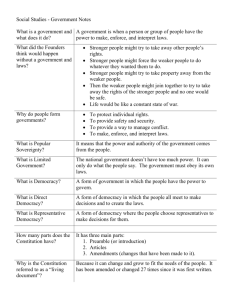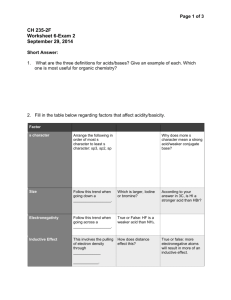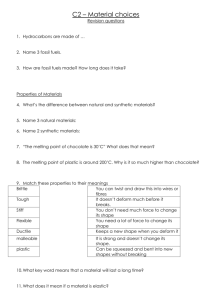2SO2(g) + O2(g) à 2SO3(g). In what direction will the reaction shift
advertisement
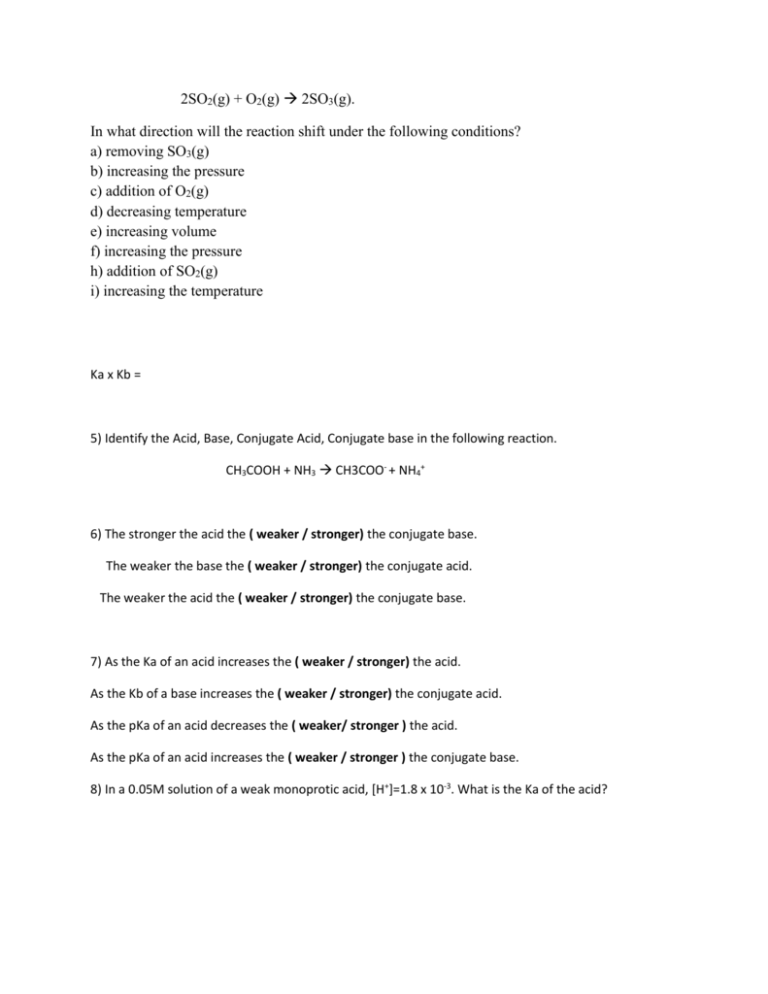
2SO2(g) + O2(g) 2SO3(g). In what direction will the reaction shift under the following conditions? a) removing SO3(g) b) increasing the pressure c) addition of O2(g) d) decreasing temperature e) increasing volume f) increasing the pressure h) addition of SO2(g) i) increasing the temperature Ka x Kb = 5) Identify the Acid, Base, Conjugate Acid, Conjugate base in the following reaction. CH3COOH + NH3 CH3COO- + NH4+ 6) The stronger the acid the ( weaker / stronger) the conjugate base. The weaker the base the ( weaker / stronger) the conjugate acid. The weaker the acid the ( weaker / stronger) the conjugate base. 7) As the Ka of an acid increases the ( weaker / stronger) the acid. As the Kb of a base increases the ( weaker / stronger) the conjugate acid. As the pKa of an acid decreases the ( weaker/ stronger ) the acid. As the pKa of an acid increases the ( weaker / stronger ) the conjugate base. 8) In a 0.05M solution of a weak monoprotic acid, [H+]=1.8 x 10-3. What is the Ka of the acid? 10) Equal number of moles of HCl and NH3 are mixed in solution. Is the following solution a) acidic b) basic c) neutral d) no idea What are the equilibrium concentrations of acetic acid, the acetate ion, and hydronium ion for a 0.10M solution of acetic acid with a Ka = 1.8 x 10-5? What is the pH of the solution? Stomach acid has a pH of 2. Sour milk has a pH of 6. Stomach acid is: a) 4 times more acid sour milk. b) 3 times more acidic than sour milk. c) 100 times more acidic than sour milk. d) 10,000 times more acidic than sour milk. 1) Calculate the pH of a 0.030 M NaC6H5O2 solution. (Ka = 6.3 x 10-5 for HC6H5O2) 2) At 2000K the equilibrium constant for the formation of nitrogenoxide is 4.0 x 10-4. N2(g) + O2(g) 2 NO(g) you have a flask at 2000K the concentration of nitrogen is .5M, oxygen is .25M, and nitrogen oxide is 4.2 x 10-3 M Is the system at equilibrium? If not, predict which direction the reaction will proceed to achieve equilibrium? 3) H2(g) + I2(g)2HI(g) Consider the above reaction. If HI at 0.500atm, H2 at 0.100atm, and I2 at 0.00500atm are mixed at some constant T, what will be the equilibrium pressure of each species if Kp for the equilibrium is 100? What is the KC for the reaction?
